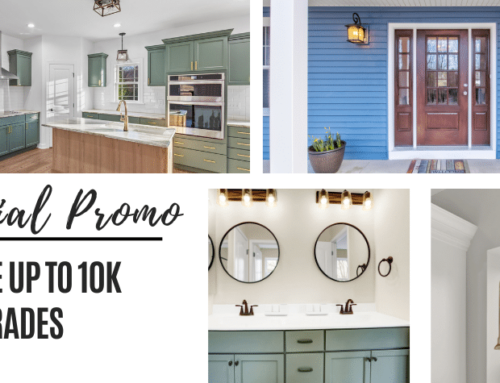You’ve found the perfect place to build your new home, but you have a nagging concern: Is the sloped lot going to be a problem?
First, take heart: It can be tough to find a lot with a completely flat grade. Most lots, especially in hilly states like Pennsylvania and New York, have some subtle changes in slope. With that being said, a steeper slope does present some considerations, many of which may alter your decision to build at a specific spot.
Below are some of the biggest pros and cons of constructing your dream home on a sloped lot.
Pro #1: You can finally get a walkout basement.
Did you grow up in a home with a traditionally dark, dank basement? A sloped lot can give you the walkout, finished basement with daylight you’ve thought about for so long, with extra square footage to fill with rooms and furnishings.
Many homeowners choose to build their residences on sloped lots because they can more easily enjoy living in the well-lit lower level, and also heading outside to enjoy a deck, patio, garden, or path. Professional homebuilders can show you some clever and creative ways to use your basement rooms, such as turning them into in-law or guest quarters, a wine cellar, a theatre room, or even a home gym. (No more excuses for that treadmill run!)
Con #1: You’ll have to be cautious about drainage issue.
If your home is built at the top of a hill, you won’t have the same sloped lot issues that you’ll have if it’s built in the middle or at the bottom of the slope, but you’ll still have to talk about drainage. Rainwater and melting sleet or snow travels to the lowest point, and that means it needs to go around and under your foundation.
Be sure that you’re working with a home builder that understands how to properly create paths for water to move past and beneath your home without affecting the structural stability. This will necessarily create more work during the construction phase, which will be added into your overall estimate.
Pro #2: You can get the advantage of some outstanding views.
Have you ever walked high on a hill and surveyed the valley below? It’s a breathtaking experience.
A home on a sloped lot can give you incredible views depending upon the proximity of your house, as well as the placement of the windows and doors. It’s tough to get that kind of ambiance from a home that’s on a perfectly level lot, and it’s a reason that many homeowners prefer sloped lots.
Con #2: Maintenance can be a challenge.
“How on earth are we going to mow the lawn?” It’s a very real question, especially if you’re planning on building a home on a sloped lot.
Obviously, the steeper the grade, the harder it will be to keep your landscaping in order. You may want to consider adding retaining walls of differing heights and dimensions, along with plants or grasses that do not need to be traditionally cut with a mower. Another alternative with a sloped lot is to add low-maintenance rocks, trees, and other landscaping elements to reduce the upkeep.
Pro #3: You can create a one-of-a-kind architecturally designed home.
With a sloped lot, you have almost unlimited options in terms of your residence’s ultimate architecture. This is the reason so many sloped lot homes are unique in their designs. You can even have a pool if it’s handled correctly!
At the beginning of the planning process with your home builder, talk about the ideas you have for your dream home. Then, see what the homebuilder says. Together, you can come up with clever ways to make the most of your sloped lot, despite any problems the grade might create.
Con #3: You will have to watch out for erosion.
Erosion is a natural process, but that doesn’t make it less serious if it’s happening on your home’s lot.
You’ll want to work with your home builder on designs that neutralize erosion, as well as the likelihood of sliding land. Before construction begins, a thorough exploration of the soil types on your sloped lot will help determine what the homebuilder should do to minimize risk associated with eroding earth.
In a best-case scenario, your home builder can evaluate the sloped lot before you make your purchase. That way, you’ll be able to find a more appropriate place to construct your home, if necessary.
Pro #4: You may save money on excavation costs
As you can imagine, a smaller amount of soil needs to be removed when you’re dealing with construction on a sloped lot than on a more traditional level lot. This helps balance the added cost of other issues related to sloped lots, such as drainage and foundation considerations.
Your home builder will be able to give you more detail on a cost analysis of your sloped lot excavation prices, as well as explain the best methods of excavating the soil around your new home.
Con #4: You might have to pay extra for utilities to reach your home.
Is your sloped lot in an already developed neighborhood with other homes on graded lots? You’re in luck. The utility companies have already paid to have pipes running uphill to supply water and energy.
No matter where you build your dream home, you’ll always have certain considerations to think about. A sloped lot isn’t a reason to ditch your fantasies of raising your family overlooking a valley or high above a naturally meandering stream. It’s just another aspect of building a home to keep in mind during planning stages.











